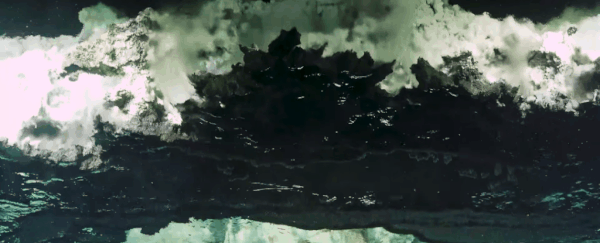Deep under the ocean, in the dark, dark depths, marine scientists have discovered a new field of hydrothermal vents, hosting an ecosystem unlike any other - with a plethora of species that have never been seen before.
It's been named Jaich Maa, and it's in the Pescadero Basin at the southern end of the Gulf of California, 3,800 metres (12,467 feet) below the surface. It was discovered and explored by scientists from a number of institutions across the US and Mexico.
Hydrothermal vents are a fascinating phenomenon. They're cracks or chimneys in the seafloor that vent heat from subterranean activity - usually of the volcanic variety.
They're also nutrient-rich oases for seafloor life. Here, you'll find abundant bacteria that feed on chemical energy produced by the hydrogen sulfide spewing out of the vents, a process called chemosynthesis.
On top of that, there are plenty of larger animals that move in to feed on the prolific bacteria, and so on, up the food chain.
Among hydrothermal vent fields, the newly found Jaich Maa appears to be unique. Multiple mounds of calcite, standing up to 25 metres from the seafloor, vent fluids at temperatures of up to 287 degrees Celsius (548.6 degrees Fahrenheit).
The largest of these is a real jaw-dropper. It's called Tay Ujaa, and it pours hydrothermal fluids upwards into an upside-down pond.
"Tay Ujaa entranced us with its cavern constructed of the hydrothermally precipitated calcite," wrote Bekah Shepard of Schmidt Ocean Institute, "a cavern that held a pool of shimmering water before it escaped the rim in an upside-down waterfall."
The hydrothermal fluid has a temperature of around 290 degrees Celsius, and the seawater it's in contact with is only around 2 degrees Celsius (35.6 degrees Fahrenheit). Because these two temperatures result in different refractive indices spread over a thin layer, the water appears to shimmer.
It was this feature that gave the field its name. Jaich Maa means "liquid metal" in the language of the ancient indigenous people that lived nearby in Mexico.
Jaich Maa isn't far from land, but it's not exactly a hospitable environment. Humans need to contend with the lack of oxygen, the oceanic pressure and the extreme temperatures.
It's only been in recent years that advances in robotic technology have allowed detailed exploration of such challenging underwater environments.
A number of remotely operated vehicles were deployed to get a closer look at the field, including the Ocean Exploration Trust's Hercules and Argus, the Monterey Bay Aquarium Research Institute's (MBARI) Doc Ricketts, and Schmidt Ocean Institute's SuBastion.
"By using submarine robotics for seafloor mapping in combination with remotely operated vehicles, the science team has been able to interactively explore and sample animals, microbes, rocks, and sediment," MBARI's David Caress said.
Included among the abundant sea life were species that had never before been observed in a hydrothermal vent field - such as sea anemones, often seen elsewhere in the ocean, densely clustered around the bases of the calcite mounds.
And then there were entirely new species and behaviours.
"New species, new behaviours, blue microbes!? We were still discovering new species at the new Jaich Maa vent field on the final dive, and as you might imagine, we are quite confident there are still new things out there to be found," Shepard wrote.
"These vent sites host diverse communities, but there are a handful of animals that seem to dominate: Oasisia tubeworms, anemones, and brilliant blue scale worms."
One of the behaviours, a previously unseen interaction between two scale worms, was described as "thrilling", and much work needs to be done to catalogue all the new species, as well as figure out what the new behaviours mean, and why the microbes they found are blue.
Intense mapping, including heat mapping, revealed that there's a complex magma flow beneath the floor of the Pescadero Basin, which also requires further investigation.
"The deep ocean is still one of the least explored frontiers in the solar system," said geologist Robert Zierenberg of the University of California Davis.
"Maps of our planet are not as detailed as those of Mercury, Venus, Mars or the Moon, because it is hard to map underwater. This is the frontier."
